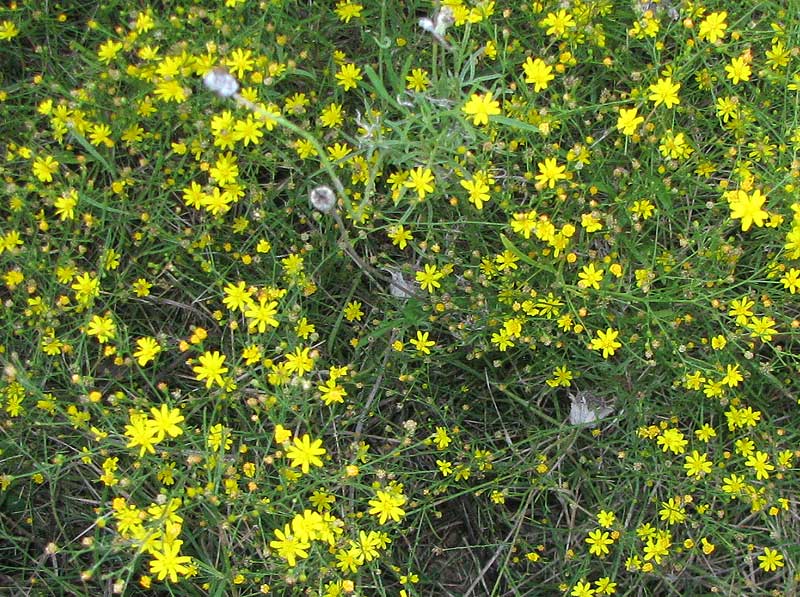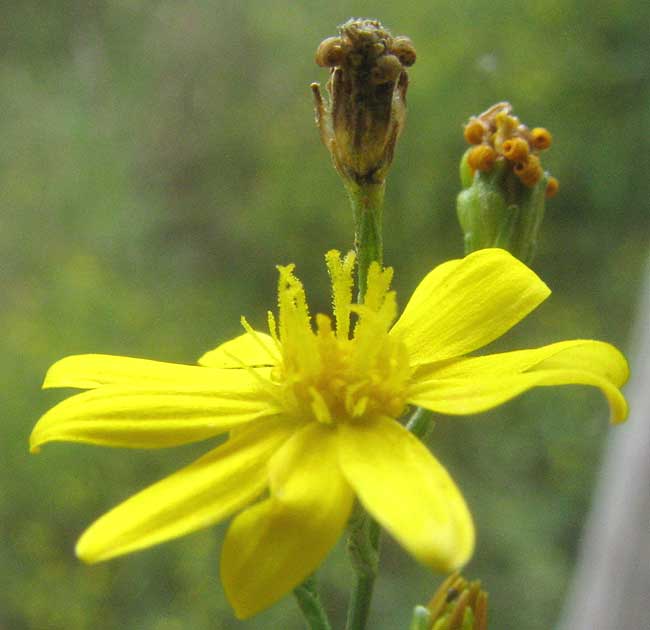Excerpts from Jim Conrad's
Naturalist Newsletter

from the the October 14, 2012 Newsletter issued from the valley of the Dry Frio River in northern Uvalde County, southwestern Texas, on the southern border of the Edwards Plateau; elevation ~1750m (~5750 ft); N29.62°, W99.86°; USA
TEXAS SNAKEWEED
Nowadays along roadsides as well as in thin soil atop limestone ledges along the little Dry Frio River, and lots of habitats in between, there's a super-abundant, knee-high, annual wildflower/weed whose many branches and leaves are so slender that the little yellow flowers at branch ends sometimes look as if they're suspended in thin air. Along the roads the effect is of a yellow-tinged gauziness. You can get a hint of the visual affect above.
Up close you see that the flowers are typical of the enormous Composite or Sunflower Family, with ray flowers looking like petals and disk flowers clustered in the head's center, at shown below:

This is Texas Snakeweed, also known as Texas Broomweed, Annual Broomweed, Matchbush, Matchweed and Kindling Weed. It's GUTIERREZIA TEXANA, found in much of northern Mexico and the US south-central states. The various names alluding to firemaking allude to the fact that later in the year when the stems are frost-killed and dry, you can grab a handful of stalks and twist them together to make a torch that burns when you set fire to it. You can do that with many grasses and other plants as well, but Texas Snakeweed leaves and stems contain a substance that burns exceptionally well. Some say the substance is like turpentine, but I can't see it. It is indeed smelly and leaves the fingers gummy, though. In the old days pioneers, impressed with the medicinal qualities of turpentine, served up teas of Texas Snakeweed as cold remedies.